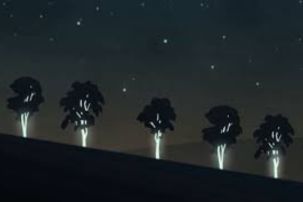Lesson summary
This lesson is designed for a flipped classroom, where students learn new content by watching a video in their own time. This strategy provides the opportunity for students to build their knowledge, attitudes and values by themselves, thereby freeing up class time for hands-on work.
Learning intentions:
Students will...
- understand what bioluminescence is and how it works.
- recognise some of the ways scientists are using bioluminescence.
- build their thinking and questioning skills.
Lesson guides and printables
Lesson details
Curriculum mapping
Australian Curriculum content descriptions:
Year 9 Science:
- Ecosystems consist of communities of interdependent organisms and abiotic components of the environment; matter and energy flow through these systems (ACSSU176)
Year 10 Science:
- The transmission of heritable characteristics from one generation to the next involves DNA and genes (ACSSU184)
- Advances in scientific understanding often rely on developments in technology and technological advances are often linked to scientific discoveries (ACSHE192)
Syllabus Outcomes: SC5-15LW, SC5-14LW.
Time needed: 20 minutes.
Level of teacher scaffolding: Low – allow students to explore the topic independently.
Resources required
- Internet
- laptops and earphones
- Student Worksheet
Additional info
This is an original Cool.org lesson. Facts and figures in these lessons may have changed since this lesson was published. We always endeavour to update our resources in a timely manner, but if you see an error or issue in our resources please get in touch with us.


Welcome back!
Don't have an account yet?
Log in with:
By signing up to Cool.org you consent and agree to Cool's privacy policy to
store, manage and process your personal information. To read more, please see
our privacy policy here(Opens in new tab).
Create your free Cool.org account.
Many of our resources are free, with an option to upgrade to Cool+ for premium content.
Already have an account?
Sign up with:
By signing up to Cool.org you consent and agree to Cool's privacy policy to
store, manage and process your personal information. To read more, please see
our privacy policy here(Opens in new tab).